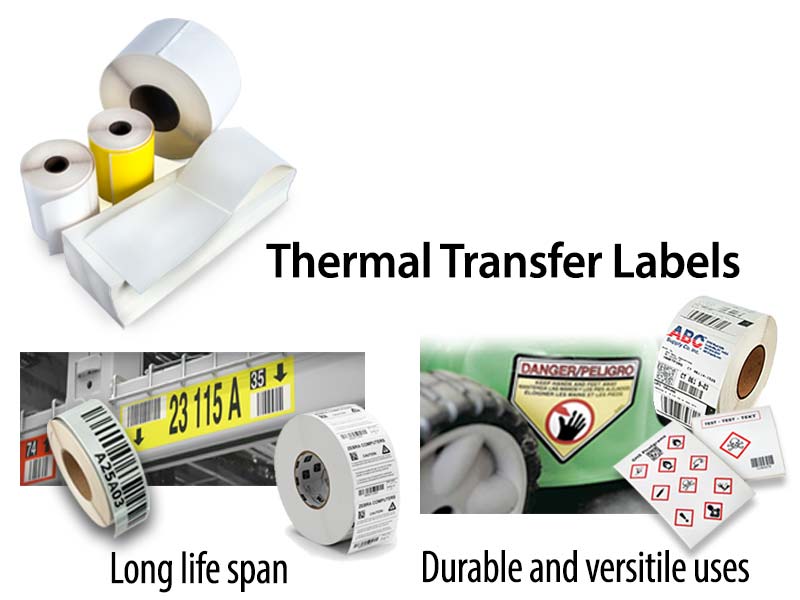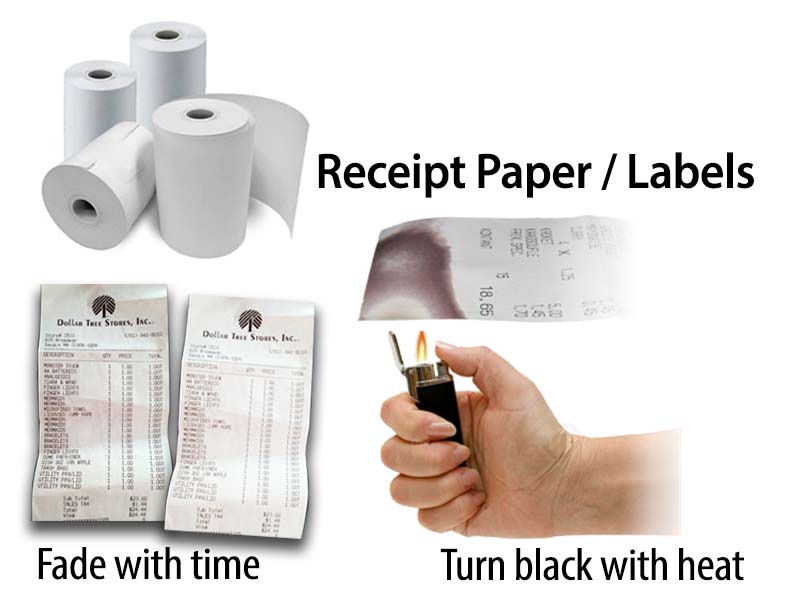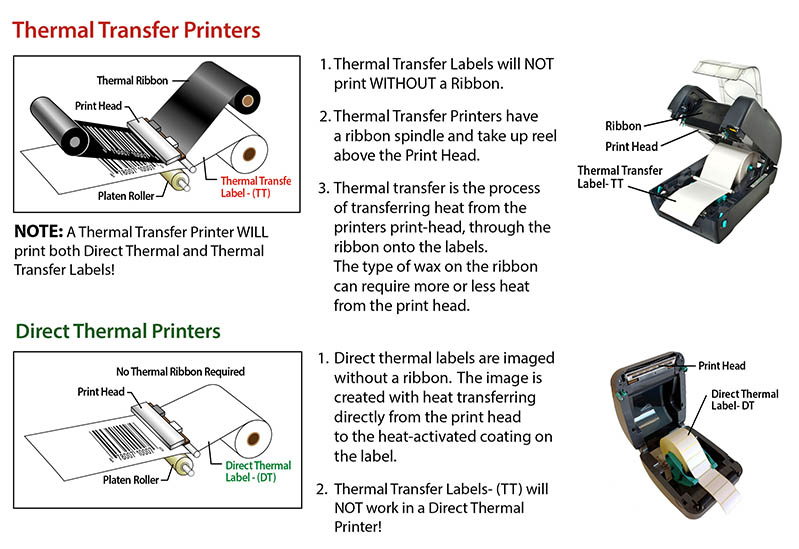Direct Thermal vs Thermal Transfer
A common question for those entering the world of thermal printing is, “What’s the difference between direct thermal printing and thermal transfer printing?” While both methods use heat to image a substrate (label, tag or paper), direct thermal applies heat from the printhead directly to the substrate, while thermal transfer applies it to a thermal transfer ribbon, which melts onto the substrate.
In thermal transfer printing, heat from the printer's printhead travels through the thermal transfer ribbon onto the substrate, leaving the desired image behind. Thermal transfer ribbons come in three varieties: wax, wax/resin, and full resin.
Material: Paper, paper tags, synthetic labels and synthetic tags
Uses: Shipping labels, asset marking, product labels and other applications that require durable images
- Labels slightly less expensive than direct thermal labels
- Long label life
- A wide variety of materials
- Good UV and chemical resistance
- Ribbon required for material
- More expensive upkeep (ribbon replacement)

In direct thermal printing, the heated printhead is applied directly to the substrate. The chemical coating on the substrate turns black once heated, creating the desired image.
Material: Paper, paper tags and limited synthetics
Uses: Retail receipts and shipping labels
- No ribbon necessary
- Inexpensive to purchase and print
- Limited print lifespan
- Less durable than thermal transfer


If you’re unsure about whether thermal transfer printing or direct thermal printing is best for your application, Barcode Factory can help. We’ve designed labels for the most rugged applications, including the US military, automakers and the aviation industry, as well as manufacturers in every sector. Our test facilities are perfectly suited to determining which adhesive, face stock and print technology will best meet your application requirements.
For more information or to discuss your project, Contact Us or call 888-237-8525.


